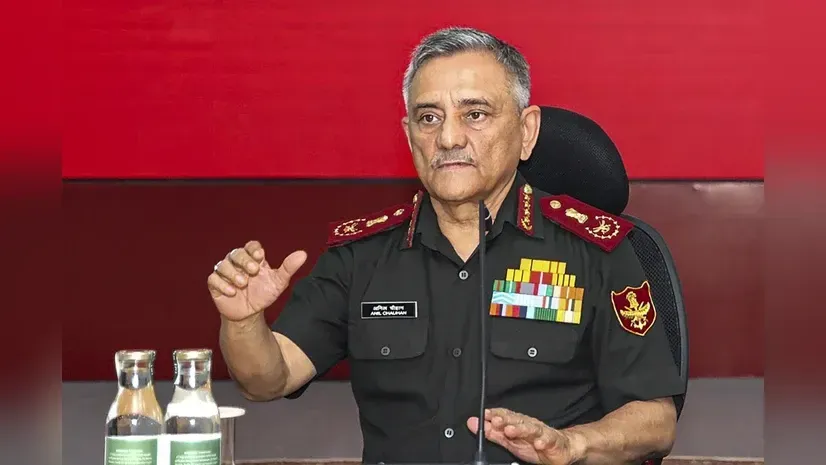Post Operation Sindoor: CDS Anil Chauhan Calls for Incorporating Key Lessons into India’s Theaterisation Plan

India’s ambitious move toward military theaterisation — the integration of its Army, Navy, and Air Force into unified commands — has once again taken center stage following Operation Sindoor, a large-scale tri-services exercise conducted earlier this year. In the aftermath of the operation, Chief of Defence Staff (CDS) General Anil Chauhan stated that the lessons learned must be integrated into the evolving theaterisation model, emphasizing the need for a “future-ready and joint” military structure.
This renewed discussion comes amid a careful balancing act between modernization, inter-service coordination, and operational efficiency.
What is Theaterisation?
Theaterisation refers to reorganizing India’s armed forces into integrated theatre commands, where all three services — Army, Navy, and Air Force — operate under a single commander for specific geographic or functional domains.
The concept aims to:
Enhance jointness among the services
Avoid duplication of resources
Improve response time in crises
Streamline command structures for better strategic outcomes
Currently, each service operates independently with its own command chain. Theaterisation seeks to bring these forces under a unified strategic umbrella.
CDS General Anil Chauhan: Operation Sindoor as a Learning Experience
According to The Hindu and Hindustan Times, CDS Gen. Anil Chauhan stated that Operation Sindoor’s outcomes offered valuable insights into joint operations, logistics coordination, and command integration.
“Post Operation Sindoor, more lessons learned need to be incorporated into our model,” said General Chauhan.
“Jointness is the key to building a future-ready force.”
He emphasized that about 90% of planning for theaterisation is already complete, as reported by Bharat Shakti, and the final implementation will be based on Indian realities, not on foreign templates.
IAF’s Perspective: Not Opposed, but Cautious
The Indian Air Force (IAF) has historically expressed reservations about theaterisation — particularly concerning the allocation of its limited aerial resources across multiple theatre commands.
However, IAF Chief Air Chief Marshal V.R. Chaudhari clarified, as reported by The Indian Express, Tribune India, and Business Standard, that the Air Force is not opposed to new structures, but insists that any new command model must be “well-considered, deliberate, and tailored to India’s specific strategic needs.”
“We are not against theaterisation. We are for it — but the model must fit India’s requirements and not be a copy of others,” the IAF Chief told Business Today.
He also reiterated that the Air Force supports tri-service integration, provided it preserves operational flexibility and efficiency.
Lessons from Operation Sindoor
Operation Sindoor, conducted earlier this year, was a comprehensive tri-service exercise designed to test interoperability, logistics, and communications between the three forces.
As per Devdiscourse and Oneindia, the operation showcased both strengths and challenges:
Enhanced inter-service communication led to faster mission execution.
Logistics and resource sharing were tested across terrains and weather conditions.
Gaps in command integration highlighted the need for refined coordination mechanisms.
These findings now form the backbone of proposed refinements in the theaterisation blueprint.
Strategic Vision: Integration and Innovation
In his remarks carried by Press Trust of India and Bharat Shakti, General Chauhan underlined that the wars of the future will demand integration, innovation, and technological superiority.
“We must move beyond structural slogans to achieve true operational synergy,” he noted.
This vision aligns with CAPSS India’s analytical piece, “The Idea of Jointness: Beyond Structure and Slogan,” which argues that theaterisation is not merely about structural reforms but also about a mindset change across the forces.
Challenges Ahead
While progress toward theaterisation is visible, significant hurdles remain, as pointed out by Deccan Herald’s analysis titled “Military Theatre-isation: India Faces Challenges in Reform.”
Key challenges include:
Command hierarchy conflicts among the services.
Technology and data integration for joint operations.
Doctrine alignment across land, air, and sea forces.
Cultural and institutional resistance to change.
However, defense experts argue that Operation Sindoor has served as a critical catalyst, pushing the debate toward a more practical and tested framework.
Industry and Strategic Reactions
Defense analysts, including Lt Gen Harinder Singh (Retd) and Huma Siddiqui, noted that India’s evolving model should blend strategic autonomy with joint operational command.
Bharat Shakti’s coverage highlighted how the IAF is modernizing its technological backbone, including AI-driven surveillance, integrated radar networks, and joint command systems, all of which will feed into the theaterisation process.
Meanwhile, Asianet Newsable’s commentary titled “Mixed Signals and Missed Opportunities” pointed to the Air Force’s dilemma — balancing central control with integrated command structures — as one of the key debates shaping the process.
Conclusion
India’s theaterisation journey is at a decisive juncture.
With Operation Sindoor’s lessons now under review, the nation’s top military leadership appears aligned on one point: integration is inevitable, but it must be carefully customized to India’s unique security environment.
As CDS Gen. Chauhan affirmed, the future of India’s defense lies in a joint, agile, and adaptive force, capable of meeting tomorrow’s challenges through synergy and strategic unity.
Press Release on Our All Websites for Powerful Online Presence
Get your brand featured with a world-class press release, published across all our high-authority websites — complete with powerful do-follow backlinks. Crafted to meet global press release standards, our service ensures maximum credibility, visibility, and SEO impact. Special pricing and exclusive offers are available for a limited time. Contact us today at sunil@justbaazaar.com to elevate your brand’s presence."
Created with © systeme.io









